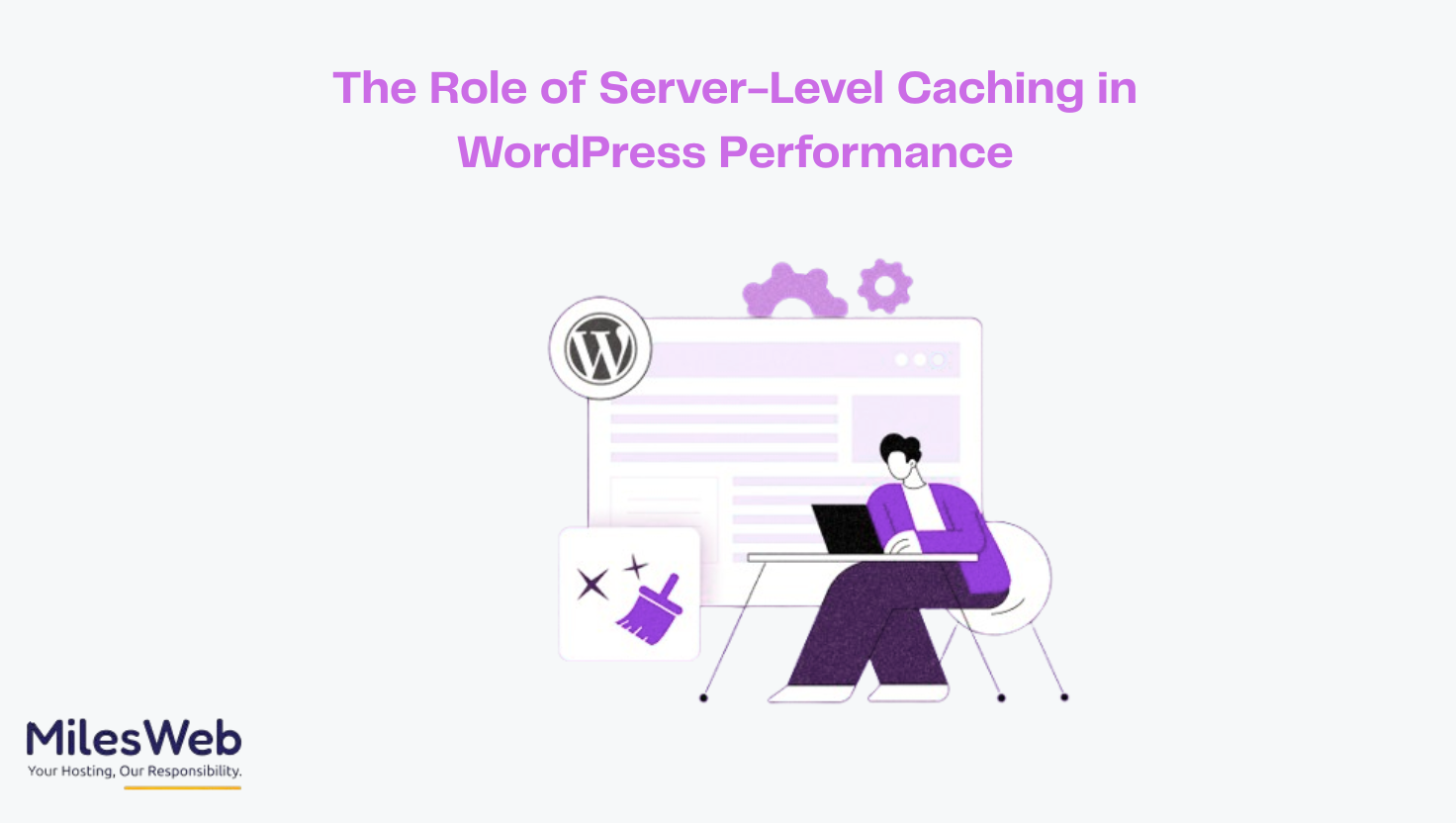Every second counts when discussing WordPress website performance. Websites that take too long to load annoy users, decrease interaction levels, and negatively impact search engine rankings. The more commonly utilized caching is the plugin-based caching, and the next level is the server-level caching, which is one that speeds up content delivery at the hosting infrastructure level.
Server-level caching of the basic WordPress hosting, unlike normal caching, removes the redundant processing. It also gets fewer queries to the database and provides a smoother user experience. In case your business depends on WordPress to draw in traffic, leads, or sales, this performance boost will determine whether you keep your visitors or they go to competitors who have a better performance.
What is Server-Level Caching?
Server-level caching is the caching of versions of website pages at the server. It entails the case where when the users request content, the server sends it without reloading the page every time.
Also, it saves end users a lot of time by pinching down the execution of PHP and the number of database lookups. It ensures that WordPress websites hosted by the managed WordPress hosting providers are more reliable and quicker than the use of only a caching of the plugins.
1. Improved Largest Contentful Paint (LCP)
Google’s Core Web Vitals put significant emphasis on LCP as a ranking factor. Server cache is key in enabling heavy images, banners, and content to load quickly.
This not only allows a website to rank higher, but also establishes a good first impression to the user who expects things to work quickly.
2. Reduced Server Load During Traffic Spikes
High-traffic events, like product launches or seasonal sales, overwhelm servers running WordPress. By using server caching, we offload the server by serving cached pages rather than creating each request dynamically.
Towards this end, websites now remain up and running, responsive and stable, even if thousands of users are simultaneously accessing the same pages, eliminating downtime and unresponsive access.
3. Better Compatibility with CDNs
Server-level caching works seamlessly with CDNs (Content Delivery Networks). Cached pages are pushed across global servers. It ensures content is served from the closest geographical location to the user.
Combined with the minimized latency approach, it also reduces bounce rates and guarantees consistent performance worldwide.
4. Enhanced First Input Delay (FID)
Slow website engagement rate, like clicking a button or form loading, frustrates users. Server-level caching reduces the delay caused by backend processes.
With inadequate resources consumed per request, WordPress websites become interactive and responsive, improving FID and overall usability.
5. Lower Resource Consumption
Optimized WordPress servers repeatedly execute scripts and query databases. It consumes less CPU memory. Server-level caching bypasses the performance lag and ensures faster content delivery.
This efficiency accelerates performance and also allows businesses to manage web hosting costs effectively, avoiding the need for constant server upgrades.
6. A Foundation for Scalability
Server-level caching builds a solid foundation for a growing website and its scalability. It ensures consistent performance as traffic and content demand increase.
It is possible to prepare WordPress websites for long-term growth without sacrificing speed or reliability by implementing caching at the infrastructure level
7. SEO and Conversion Rate Benefits
Server-level caching contributes to better SEO outcomes. As we all know that search engine prioritizes faster websites in their SERPs (Search Engine Result Pages). With the maximum speed and stability, WordPress websites attain higher online visibility in search results.
Whereas users who enjoy a seamless browsing experience are likely to stay longer, explore more pages, and convert into customers. Overall, it boosts both traffic and revenue.
8. Future-Proofing WordPress Performance
The demand for fast server infrastructure will increase with the number of interactive websites. More content-rich, and AI-driven featured websites will grow timely. Server-level caching ensures the WordPress website is competitive, no matter how technology advances.
With caching and current hosting environments, companies can develop futuristic websites, where responsiveness and stability are assured to attain customer expectations and Google EEAT standards.
Conclusion
Caching on the server level is not an upgrade on the technical level only, but a competitive advantage. It makes WordPress websites perform in the real world in a different way, speeding up load times, enhancing Core Web Vitals, and providing stability and performance under load.
In the case of businesses, server-level caching translates to higher rankings, satisfied users, and a scalable website. It is not simply a good optimization in a digital world that moves at a speed, but it is a necessity.




